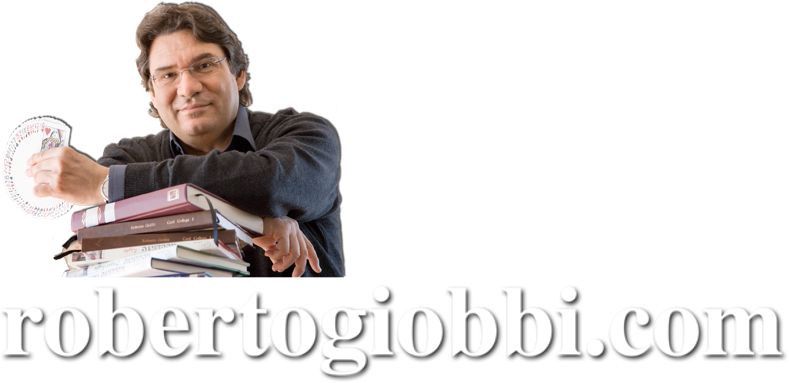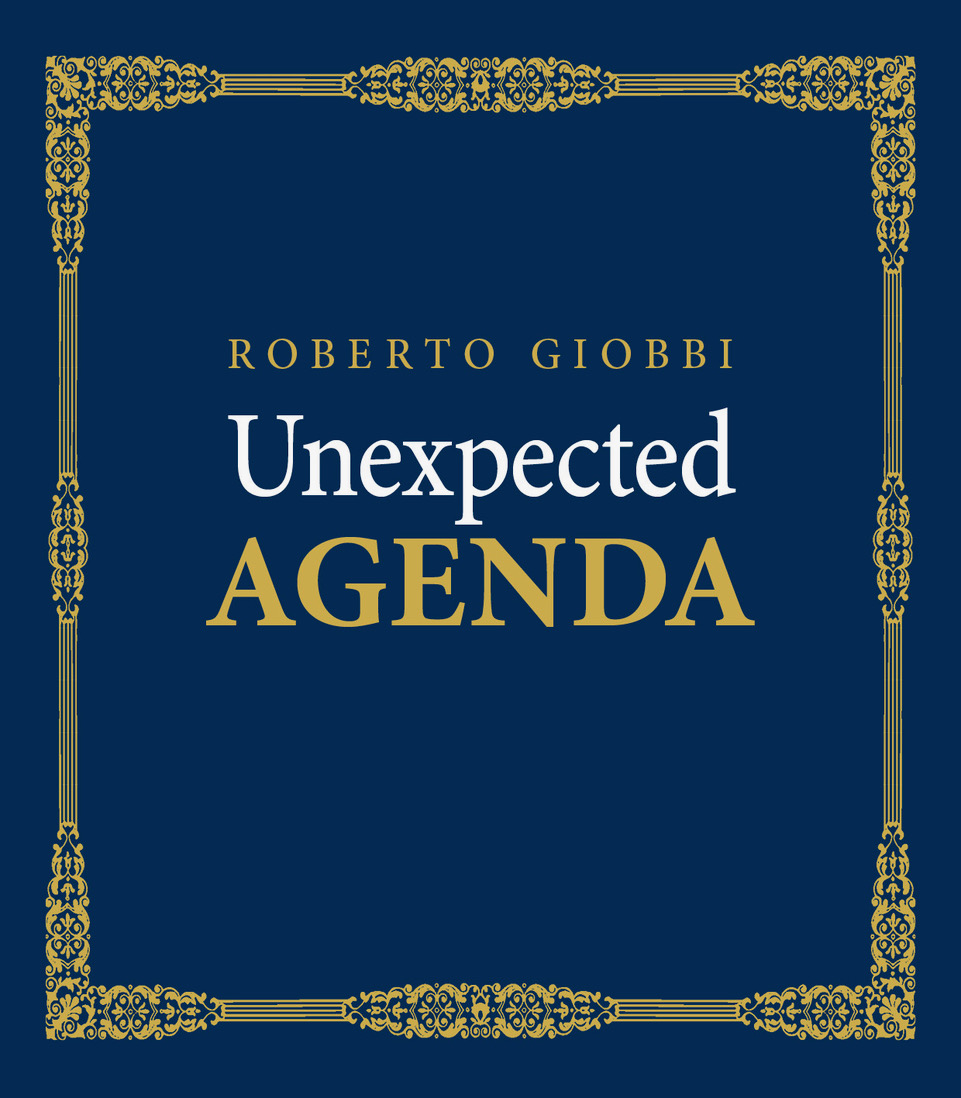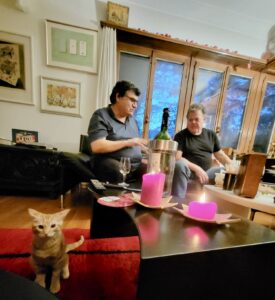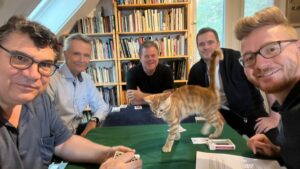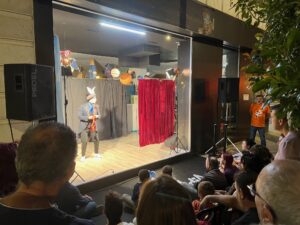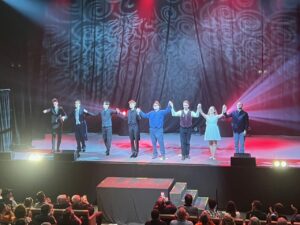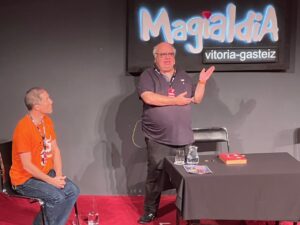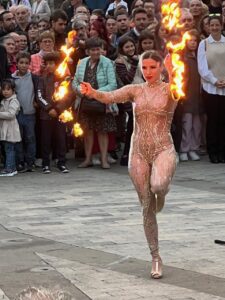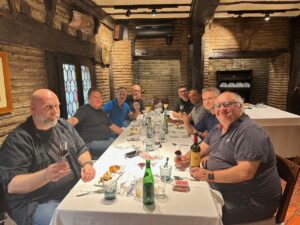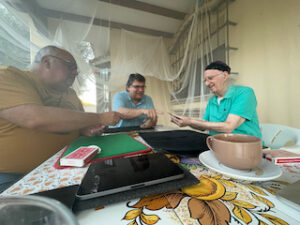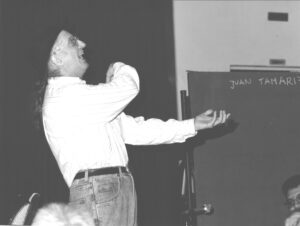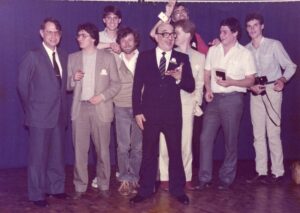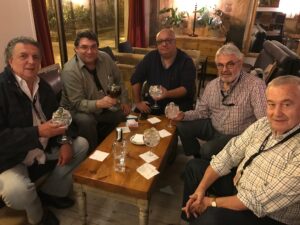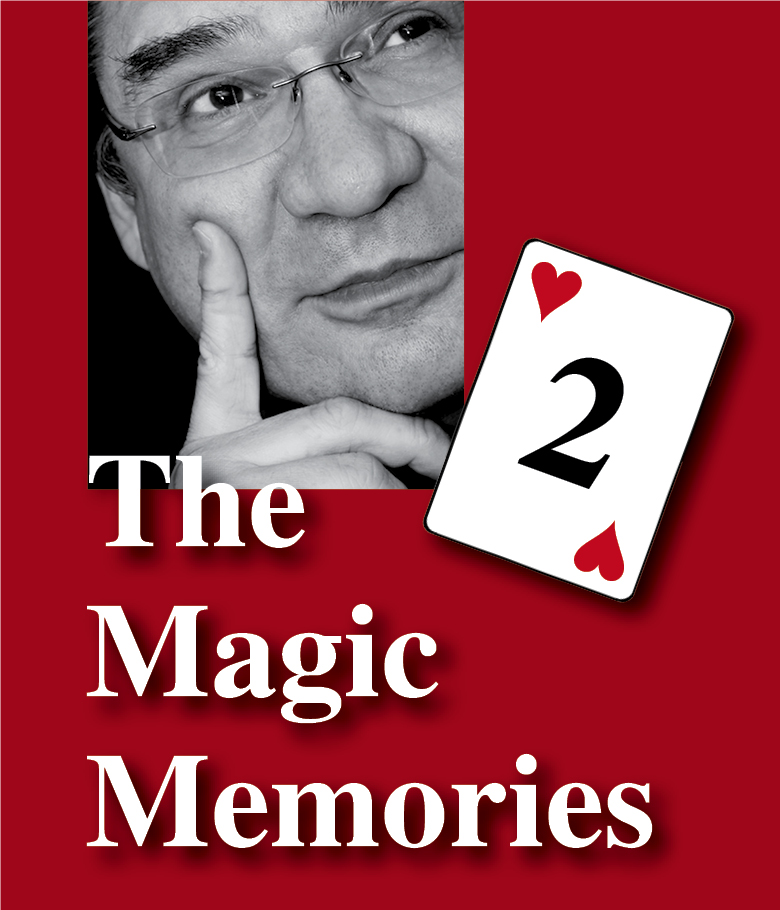
Hello everyone!
Today’s topics are: Notes From the Great Brain Robbery; “The Magician” Whisky
These are The Magic Memories 199, gone online Sunday, October 20, 2024, at 0:07h sharp.
All The Magic Memories from 2021, 2022, and 2023, including the Magic Advent Calendar from 2020, can be found HERE.
We are approaching the milestone of #200 of The Magic Memories, something I had not originally planned but that has come to fruition.
I made a promise to my friend Roland Heuer, who is the only person to consistently send me feedback and a “Thank you” after each post—every week, no less!—that I would continue this endeavor until the end of 2024. After that, we’ll see what happens. After all, The Magic Memories emerged as a natural response to the COVID-19 lockdown, which, fortunately, ended quite some time ago.
Autumn changes the colors of the leaves, as the view from my magic studio loft proves in the photo below.

Anyway, here are a few thoughts that I hope will pique your interest or prove useful—ideally, both!
Notes From the Great Brain Robbery
In 1980, Ray Considine and Murray Raphel published The Great Brain Robbery, subtitled *A Collection of Proven Ideas to Make You Money and Change Your Life!* What a title!
By 1988, when I turned professional, I found myself drawn to this kind of material. I can’t deny that much of what I absorbed from books, tapes, articles, and the occasional course or seminar left a lasting mark on my life as a full-time performer. These lessons helped me maintain a dignified life for my wife, two children, and myself—in Switzerland, no less, which is no small feat.
In time, I left behind marketing, advertising, and all that jazz, choosing to focus solely on my magic. This approach worked exceedingly well—until the arrival of social media… but that’s a story for another time.
In 1989, Murray Raphel (1928–2019), a marketing expert, came to Switzerland for a one-day seminar on direct marketing, if memory serves. Recently, while organizing my smaller library (the one with about 800 non-magic books), I came across some hand-written notes that fell out of the Considine-Raphel book. Rereading them brought back many memories, along with a few smiles.
There’s no doubt that the way services are marketed and purchased today has drastically changed since the 1980s—first with the advent of the Internet and websites, then globalization, and now, of course, with social media and AI on the horizon.
But one thing, unfortunately, hasn’t changed much: human nature.
Whenever I’m asked for business advice at lectures or workshops, I always emphasize that I’m happy to answer any question—except those about business. For my New World readers, this may be hard to understand, but in the Old World, and especially among artists, “business” is still a somewhat dirty word—let’s leave it at that.
Today, however, I’ll break my own rule by sharing a few insights from the six pages of notes I took at Raphel’s workshop, with brief comments. Some ideas may sound familiar, as nearly forty years have passed. Others may seem outdated, but if you distill them down to their essence, you’ll see they can be adapted to today’s reality. Hopefully, you’ll find some of it amusing—and perhaps even instructive.
On Direct Mail
Raphel recommended sending regular mailings—back then, this meant physical mail, but today, it’s easily and cheaply done with email. These mailings should feature a slogan, such as: “You would need a full variety show to surpass the impact of a magician. Magic encompasses all emotions, all the elements that fascinate.” He also suggested always including a coupon offering something like a small gift, extra information, or an invitation to an event.
Rather than focusing only on markets that already book you, he encouraged exploring new, untapped markets.
Raphel also maintained that January was the best month for direct mail campaigns. I think that advice still holds true. When I was at my busiest, I remember having nearly as many bookings in January as in November and December. The reason? People are too busy with personal and business parties before the holidays, so many companies opt to hold their celebrations in January, when calendars are quieter.
Clever of them—and good for us.
Coupons
As mentioned, coupons serve various functions, such as offering 20% off bookings made within the next six months. This is easy to offer, as it allows you to avoid paying agency commissions, which can be high depending on the country you’re working in.
Personal Notes
Raphel advocated adding handwritten notes to mailings, such as Post-it-like messages. In today’s world, this could perhaps be replicated with emojis or personalized digital notes in emails, giving the same impression of a handwritten touch. For instance, you could include something like: “Why haven’t we booked [magician’s name] in a while?”
First Contact Program
One note in my records reads: “Develop a program for first contact.” While I don’t recall the exact meaning, it seems like a good idea to have a set of quick tricks or even a short routine prepared for impromptu performances when meeting a potential client or giving a brief demo during a formal visit.
Calling Cards
Business cards remain as important as ever. Their purpose is simple: to tell people who you are and what you do—and to hand out as many as possible.
Recently, my friend Yves Carbonnier from Paris pointed out an electronic business card app called “HiHello.” It generates a QR code on your smartphone, allowing others to scan it and save your information.
If you search online for magical or creative business card ideas, you’ll find countless options. Some are truly remarkable—I’ve collected hundreds over the years without even being a collector!
One of the more amusing ones I noted had the recipient’s name and address on one side of the card, with the last line saying: “Phone: turn over card…” On the reverse were phone numbers for famous individuals like the Pope, the President of the USA, or Taylor Swift—followed, of course, by your own number. Very clever, but I never actually did it!
AFTO—Ask for the Order
Raphel’s seminar reinforced this classic advice: whenever you meet a potential client, don’t be afraid to ask for the order. Simple but effective.
Postcards from Abroad
Send postcards to repeat clients you haven’t heard from in a while. For example: “I’ve come up with a few new tricks for your next event—I’d be happy to perform them for you and your guests.”
Posters & Coupons
At events, ask your client if you can display posters advertising your presence, along with handing out booking coupons to guests. This is especially useful if you’re giving the client a discounted rate—think of it as part of the compensation.
MGM—Member Gets Member
Raphel’s idea was to send out TWO copies of his newsletter, asking the recipient to share one with a friend. The newsletter would also contain a coupon offering a magical gift. You could reward both the original client and their friend in some way.
Agencies
For agencies, Raphel suggested holding a draw where five agencies would win a free booking. They could sell the booking at any price they chose, and you would perform for free (though I’d recommend asking for expenses).
WINNERS
Raphel created the acronym WINNERS:
– W-ork hard
– I-deas
– N-ow (take action now!)
– N-atural (make everything look effortless)
– E-nthusiasm
– R-epeat
– S-ell
He had a similar acronym for LOOSERS, but I must have had some protective instinct—I didn’t write that one down!
Letters of Recommendation
This is one piece of advice I’ve followed my entire career. After each performance, I would send a short thank-you note to the person who booked me and politely ask for a letter of recommendation. Many replied, and it was a great way to build credibility.
Various Ideas
– To visualize that “10% of any event is spent on entertainment,” use a dollar bill with a corner missing—quite fitting!
– Always ask your client directly what they want from a magician. Obvious advice, but you’d be surprised how often it’s overlooked.
DWYPYWD—Do What You Promise You Will Do
Perhaps the best advice Raphel gave—and one of my top five life maxims: Do What You Promise You Would Do. Enough said.
“The Magician” Whisky
While corresponding with Maxwell Pritchard, who graciously took it upon himself to refine my non-native English for *Unexpected Agenda*—making it far more palatable for my (still future) readership—he also recommended a whisky that I promptly ordered and received just a few days ago. Although I have yet to assess its qualities, as the bottle remains unopened amidst a larger collection at my bar, I’m sure you’ll agree, after seeing its label in the photo below, that it deserves a place in the reserve stock of any magician with a serious interest in card artistry.

Disclaimer: To the younger generation reading The Magic Memories, where occasional references to gastronomy and its related pleasures (wine, liquor, cigars, etc.) appear, please exercise responsibility in their consumption. I firmly believe that anything consumable—so long as it isn’t poisonous—can be considered “healthy” in the broader sense, as long as it is enjoyed in moderation, not habitually (i.e., not daily), and without allowing it to become addictive. Think of these indulgences as the “salt in the soup of life”—not as a means to escape reality, but to view it with a more vivid and creative perspective. When in doubt, it’s best to refrain. As for drugs, I have no personal experience and thus offer no advice, but I would strongly recommend avoiding them altogether.
Wish you all a successful and happy week,
Roberto Giobbi
